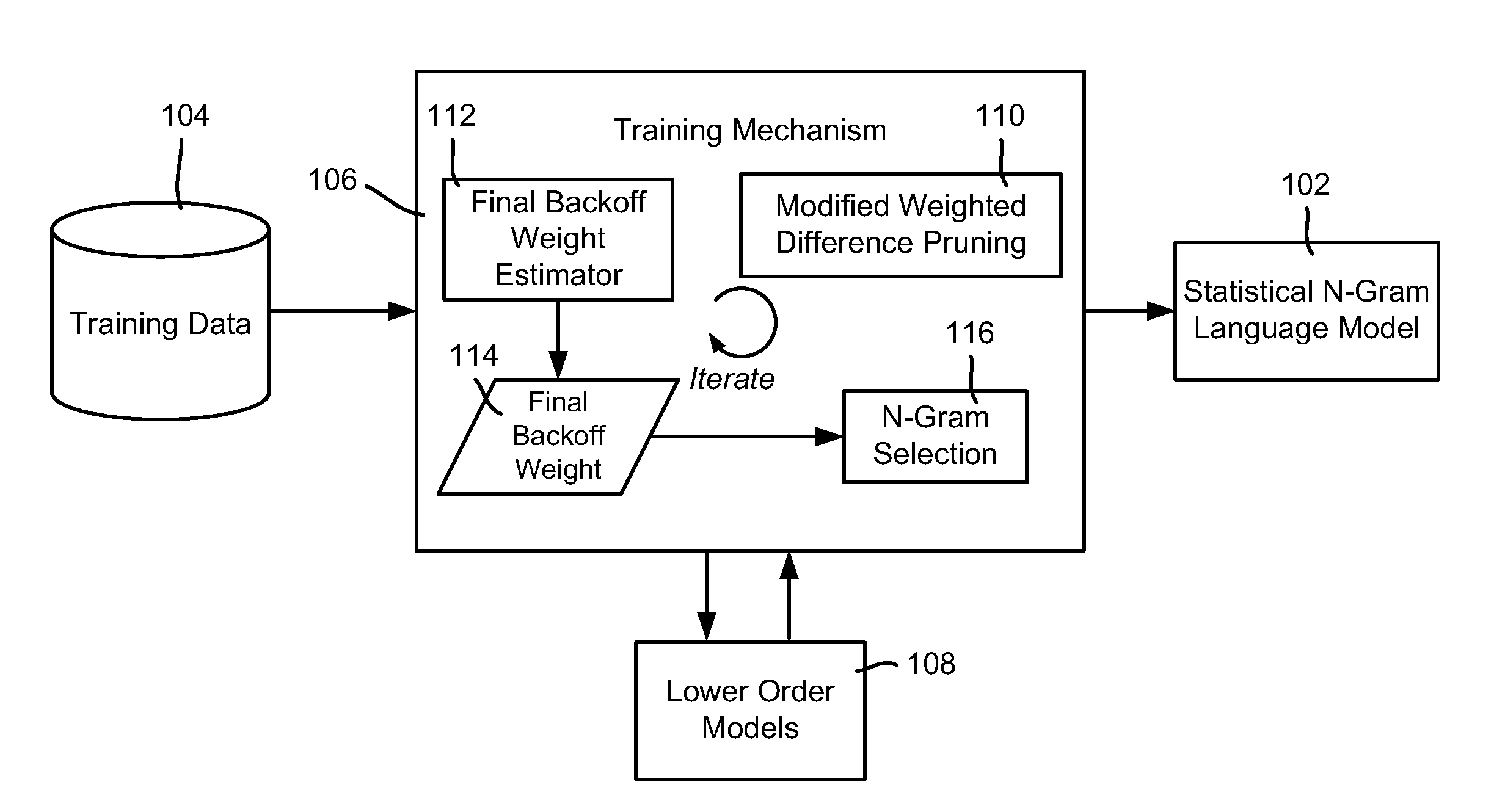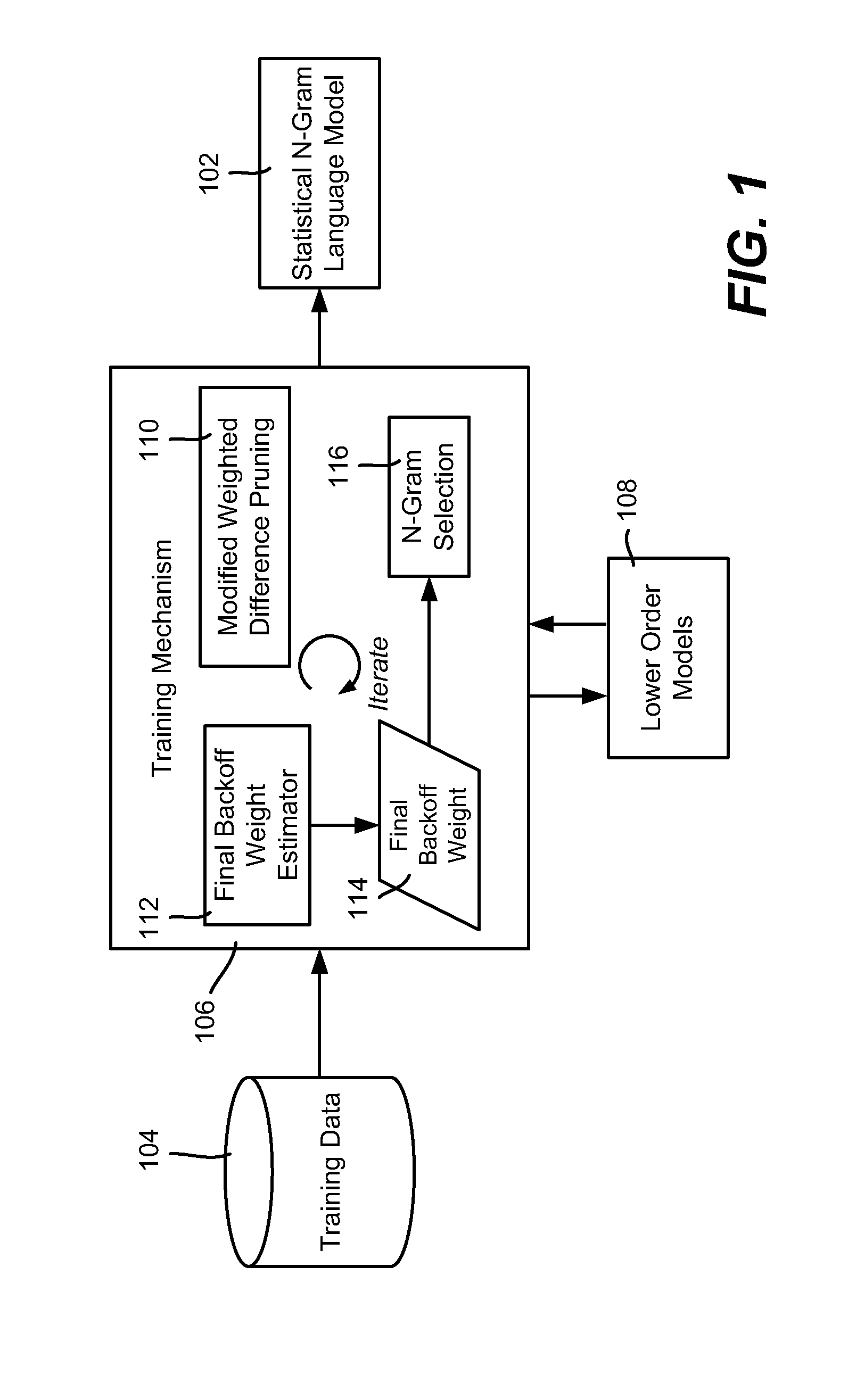N-Gram Selection for Practical-Sized Language Models
a language model and gram selection technology, applied in the field of ngram selection for practical-sized language models, can solve the problems of large language models, complex and inefficient distributed storage schemes, impracticality and/or inconvenient use in many scenarios,
- Summary
- Abstract
- Description
- Claims
- Application Information
AI Technical Summary
Benefits of technology
Problems solved by technology
Method used
Image
Examples
Embodiment Construction
[0019]Various aspects of the technology described herein are generally directed towards training N-gram language models via a technology referred to as significance-based N-gram selection, which not only reduces model size by considerably reducing the number of parameters in higher-order models, but also improves perplexity (relative to both other size-reduction techniques and to un-pruned models) when used with various smoothing methods. Also described is a modified weighted-difference pruning technique, which, when combined with significance-based N-gram selection, produces highly desirable models.
[0020]In general and as described below, N-gram selection is performed while training the model with higher and higher-order estimates, and operates to exclude an explicit higher-order estimate of the probability of a particular word in a particular context from the model whenever the distribution of observations for the higher-order estimate provides no evidence that the higher-order es...
PUM
 Login to View More
Login to View More Abstract
Description
Claims
Application Information
 Login to View More
Login to View More - R&D
- Intellectual Property
- Life Sciences
- Materials
- Tech Scout
- Unparalleled Data Quality
- Higher Quality Content
- 60% Fewer Hallucinations
Browse by: Latest US Patents, China's latest patents, Technical Efficacy Thesaurus, Application Domain, Technology Topic, Popular Technical Reports.
© 2025 PatSnap. All rights reserved.Legal|Privacy policy|Modern Slavery Act Transparency Statement|Sitemap|About US| Contact US: help@patsnap.com



